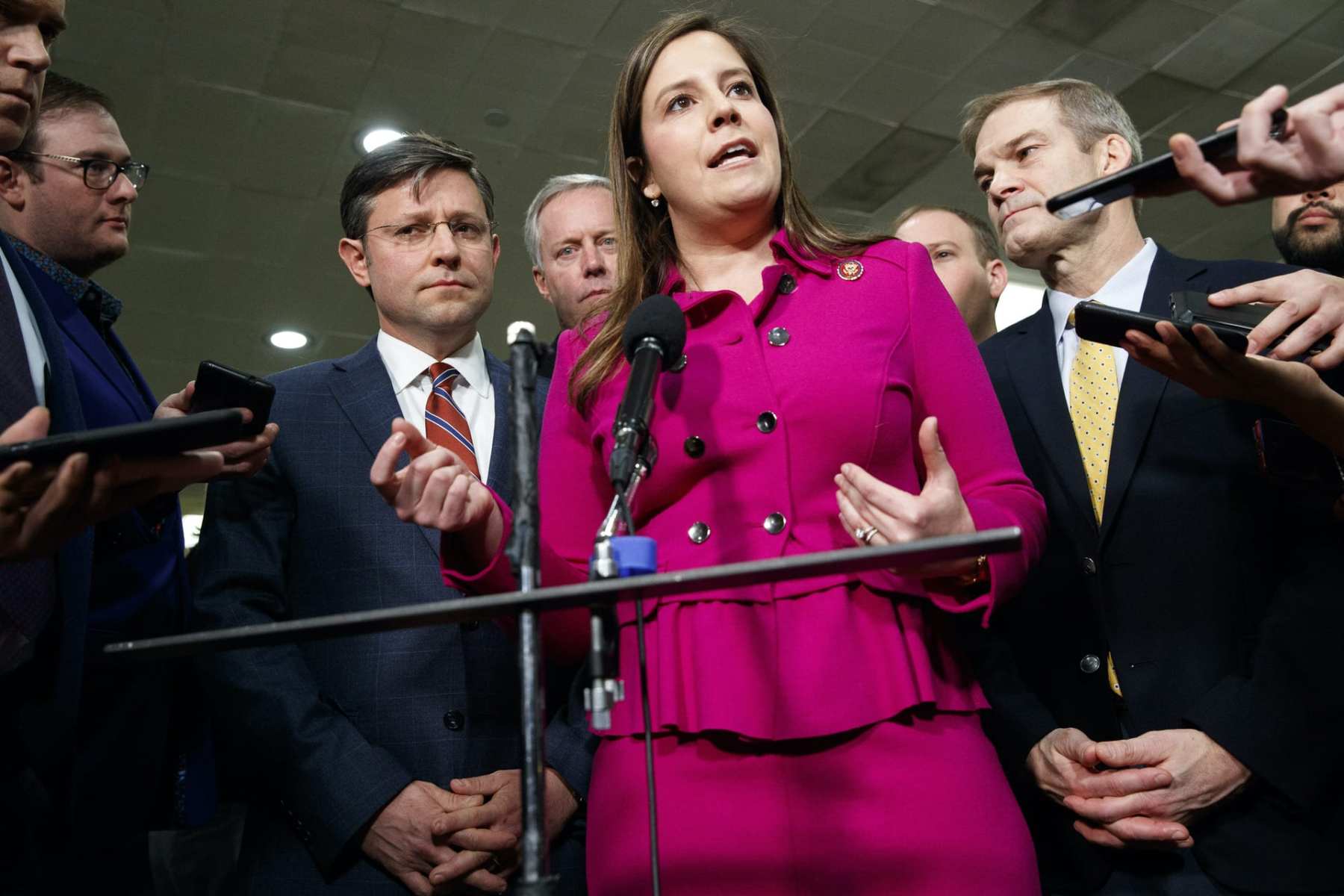U.S. Rep. Elise Stefanik remembers the day in early 2019 when the incoming freshmen of the 116th Congress were introduced on Capitol Hill.
There had been excitement over the fact that more than 100 women had been elected to Congress in the midterm, a record. But when they lined up all the new Republican members in the U.S. House, there was only one new GOP woman: Carol Miller of West Virginia.
“It really struck me that it was not reflective of the American people,” Stefanik said. “It was not reflective of our voters.”
Stefanik talked about that moment and how she wants to increase female Republican representation in Congress in a conversation that aired Thursday with Congressional Correspondent Amanda Becker, as part of The 19th Represents Summit.
In the lead-up to the 2018 election, Stefanik had recruited more than 100 Republican women to run for Congress through her role as chair of recruitment for the National Republican Congressional Committee. It was the first time a woman had served in that key job within the party, and her recruitment efforts put a record number of Republican women on the ballot.
Many of the recruited women did not make it past their primaries. Fast forward to the first day of the new Congress, and the number of Republican women in the U.S. House had dropped from 23 to 13.
“I really sounded the alarm,” Stefanik said. “And there was some pushback originally, saying that that’s outdated identity politics to specifically focus on recruiting and supporting Republican women.”
The NRCC does not support candidates publicly during the primary process, a critical step that Stefanik hopes her political action committee, E-PAC, will address. The group is working to increase the number of Republican women in Congress by supporting candidates in primaries.
Stefanik noted that she has gained the support of House Republican Leader Kevin McCarthy and House Republican Whip Steve Scalise.
“This is important because when we achieve parity in elected office, you have to do so in both parties,” she said. “It’s also important because women voters and American women are diverse in their political opinions. While the Democratic Party had a very effective ecosystem with EMILY’s List and other outside organizations, we need to build that ecosystem on the Republican Party.”
Stefanik, a congresswoman from New York, was elected in 2014 when she was 30, making her at the time the youngest woman ever elected to Congress. She remains the youngest Republican woman ever elected to Congress.
Stefanik encouraged women who are considering a run for office to be proactive. She noted that when she was running for Congress in her late twenties, “not many people thought it was a good idea, particularly some of the party leadership in the National Republican Congressional Committee, who did not support when I ran the first time, until I resoundingly won my primary.”
Stefanik said she cold-called various party leaders on the county and town level. She went to local events and drove several hours to speak to a handful of people. She recommended that others do the same, adding that there is “no set instruction manual” on running for office.
“So don’t undersell yourself,” she said. “People are really blown away when you show that you’re proactive and are going to work hard. And I think women candidates are incredibly hard workers. They don’t take it as though it’s given to them. They want to earn it.”
Stefanik also encouraged women to figure out their reason for seeking elected office. She said candidates often run because they want to address a certain issue impacting their communities.
“The single strongest indicator of a successful candidate is the fire in the belly and understanding why you’re running for office,” she said.







